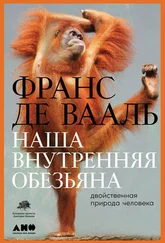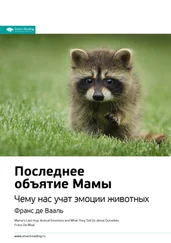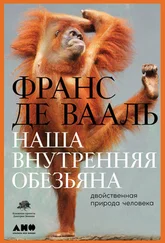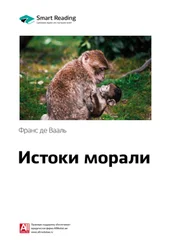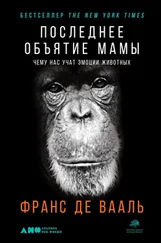Aureli, F., R. Cozzolinot, C. Cordischif, and S. Scucchi. 1992. Kin-oriented redirection among Japanese macaques: An expression of a revenge system? Animal Behaviour 44:283–91.
Azevedo, F. A. C., et al. 2009. Equal numbers of neuronal and nonneuronal cells make the human brain an isometrically scaled-up primate brain. Journal of Comparative Neurology 513:532–41.
Babb, S. J., and J. D. Crystal. 2006. Episodic-like memory in the rat. Current Biology 16:1317–21.
Ban, S. D., C. Boesch, and K. R. L. Janmaat. 2014. Taï chimpanzees anticipate revisiting high-valued fruit trees from further distances. Animal Cognition 17:1353–64.
Barton, R. A. 2012. Embodied cognitive evolution and the cerebellum. Philosophical Transactions of the Royal Society B 367:2097–107.
Bates, L. A., et al. 2007. Elephants classify human ethnic groups by odor and garment color. Current Biology 17:1938–42.
Baumeister, R. F. 2008. Free will in scientific psychology. Perspectives on Psychological Science 3:14–19.
Beach, F. A. 1950. The snark was a boojum. American Psychologist 5:115–24. Beck, B. B. 1967. A study of problem-solving by gibbons. Behaviour 28: 95–109.
–. 1980. Animal Tool Behavior: The Use and Manufacture of Tools by Animals. New York: Garland STPM Press.
–. 1982. Chimpocentrism: Bias in cognitive ethology. Journal of Human Evolution 11:3–17.
Bekoff, M., and C. Allen. 1997. Cognitive ethology: Slayers, skeptics, and proponents. In Anthropomorphism, Anecdotes, and Animals: The Emperor's New Clothes? ed. R. W. Mitchell, N. Thompson, and L. Miles, 313–34. Albany: SUN Y Press.
Bekoff, M., and P. W. Sherman. 2003. Ref lections on animal selves. Trends in Ecology and Evolution 19:176–80.
Bekoff, M., C. Allen, and G. M. Burghardt, eds. 2002. The Cognitive Animal: Empirical and Theoretical Perspectives on Animal Cognition. Cambridge, MA: Bradford.
Beran, M. J. 2002. Maintenance of self-imposed delay of gratification by four chimpanzees ( Pan troglodytes ) and an orangutan ( Pongo pygmaeus ). Journal of General Psychology 129:49–66.
–. 2015. The comparative science of "self-control": What are we talking about? Frontiers in Psychology 6:51.
Berns, G. S. 2013. How Dogs Love Us: A Neuroscientist and His Adopted Dog Decode the Canine Brain. Boston: Houghton Miff lin.
Berns, G. S., A. Brooks, and M. Spivak. 2013. Replicability and heterogeneity of awake unrestrained canine f MRI responses. Plos ONE 8: e81698.
Bird, C. D., and N. J. Emery. 2009. Rooks use stones to raise the water level to reach a f loating worm. Current Biology 19:1410–14.
Bischof-Köhler, D. 1991. The development of empathy in infants. In Infant Development: Perspectives From German-Speaking Countries , ed. M. Lamb and M. Keller, 245–73. Hillsdale, NJ: Erlbaum.
Bjorklund, D. F., J. M. Bering, and P. Ragan. 2000. A two-year longitudinal study of deferred imitation of object manipulation in a juvenile chimpanzee ( Pan troglodytes ) and orangutan ( Pongo pygmaeus ). Developmental Psychobiology 37:229–37.
Boesch, C. 2007. What makes us human? The challenge of cognitive cross-species comparison. Journal of Comparative Psychology 121:227–40.
Boesch, C., and H. Boesch-Achermann. 2000. The Chimpanzees of the Taï Forest: Behavioural Ecology and Evolution. Oxford: Oxford University Press.
Boesch, C., J. Head, and M. M. Robbins. 2009. Complex tool sets for honey extraction among chimpanzees in Loango National Park, Gabon. Journal of Human Evolution 56:560–69.
Bolhuis, J. J., and C. D. L. Wynne. 2009. Can evolution explain how minds work? Nature 458:832–33.
Bonnie, K. E., and F. B. M. de Waal. 2007. Copying without rewards: Socially inf luenced foraging decisions among brown capuchin monkeys. Animal Cognition 10: 283–92.
Bonnie, K. E., V. Horner, A. Whiten, and F. B. M. de Waal. 2006. Spread of arbitrary conventions among chimpanzees: A controlled experiment. Proceedings of the Royal Society of London B 274:367–72.
Bovet, D., and D. A. Washburn. 2003. Rhesus macaques categorize unknown conspecifics according to their dominance relations. Journal of Comparative Psychology 117:400–5.
Boyd, R. 2006. The puzzle of human sociality. Science 314:1555–56.
Boysen, S. T., and G. G. Berntson. 1989. Numerical competence in a chimpanzee ( Pan troglodytes ). Journal of Comparative Psychology 103:23–31.
–. 1995. Responses to quantity: Perceptual versus cognitive mechanisms in chimpanzees ( Pan troglodytes ). Journal of Experimental Psychology: Animal Behavior Processes 21:82–86.
Bramlett, J. L., B. M. Perdue, T. A. Evans, and M. J. Beran. 2012. Capuchin monkeys ( Cebus apella ) let lesser rewards pass them by to get better rewards. Animal Cognition 15:963–69.
Bräuer, J., et al. 2006. Making inferences about the location of hidden food: Social dog, causal ape. Journal of Comparative Psychology 120: 38–47.
Bräuer, J., and J. Call. 2015. Apes produce tools for future use. American Journal of Primatology 77:254–63.
Breland, K., and M. Breland. 1961. The misbehavior of organisms. American Psychologist 16:681–84.
Breuer, T., M. Ndoundou-Hockemba, and V. Fishlock. 2005. First observation of tool use in wild gorillas. Plos Biology 3:2041–43.
Brosnan, S. F., et al. 2010. Mechanisms underlying responses to inequitable outcomes in chimpanzees. Animal Behaviour 79:1229–37.
Brosnan, S. F., and F. B. M. de Waal. 2003. Monkeys reject unequal pay. Nature 425:297–99.
–. 2014. The evolution of responses to (un) fairness. Science 346:1251776. Brosnan, S. F., C. Freeman, and F. B. M. de Waal. 2006. Partner's behavior, not
reward distribution, determines success in an unequal cooperative task in capuchin monkeys. American Journal of Primatology 68:713–24.
Brown, C., M. P. Garwood, and J. E. Williamson. 2012. It pays to cheat: Tactical deception in a cephalopod social signalling system. Biology Letters 8:729–32. Browning, R. 2006 [orig. 1896]. The Poetical Works. Whitefish, MT: Kessinger. Bruck, J. N. 2013. Decades-long social memory in bottlenose dolphins. Proceedings of the Royal Society B 280: 20131726.
Bshary, R., and R. Noë. 2003. Biological markets: The ubiquitous inf luence of partner choice on the dynamics of cleaner fish-client reef fish interactions. In Genetic and Cultural Evolution of Cooperation , ed. P. Hammerstein, 167–84. Cambridge, MA: MIT Press.
Bshary, R., A. Hohner, K. Ait-El-Djoudi, and H. Fricke. 2006. Interspecific communicative and coordinated hunting between groupers and giant moray eels in the Red Sea. Plos Biology 4: e431.
Buchsbaum, R., M. Buchsbaum, J. Pearse, and V. Pearse. 1987. Animals Without Backbones: An Introduction to the Invertebrates. 3rd ed. Chicago: University of Chicago Press.
Buckley, J., et al. 2010. Biparental mucus feeding: A unique example of parental care in an Amazonian cichlid. Journal of Experimental Biology 213:3787–95.
Buckley, L. A., et al. 2011. Too hungry to learn? Hungry broiler breeders fail to learn a y-maze food quantity discrimination task. Animal Welfare 20: 469–81. Bugnyar, T., and B. Heinrich. 2005. Ravens, Corvus corax , differentiate between knowledgeable and ignorant competitors. Proceedings of the Royal Society of London B 272:1641–46.
Burghardt, G. M. 1991. Cognitive ethology and critical anthropomorphism: A snake with two heads and hognose snakes that play dead. In Cognitive Ethology: The Minds of Other Animals: Essays in Honor of Donald R. Griffin , ed. C. A. Ristau, 53–90. Hillsdale, NJ: Lawrence Erlbaum Associates.
Читать дальше
Конец ознакомительного отрывка
Купить книгу
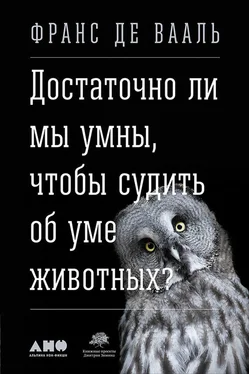
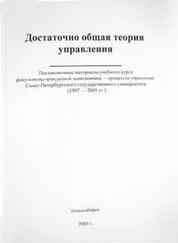
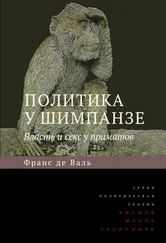

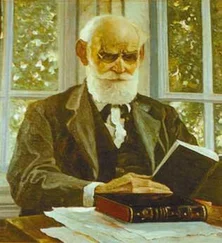
![Франс Вааль - Последнее объятие Мамы [litres]](/books/406055/frans-vaal-poslednee-obyatie-mamy-litres-thumb.webp)

